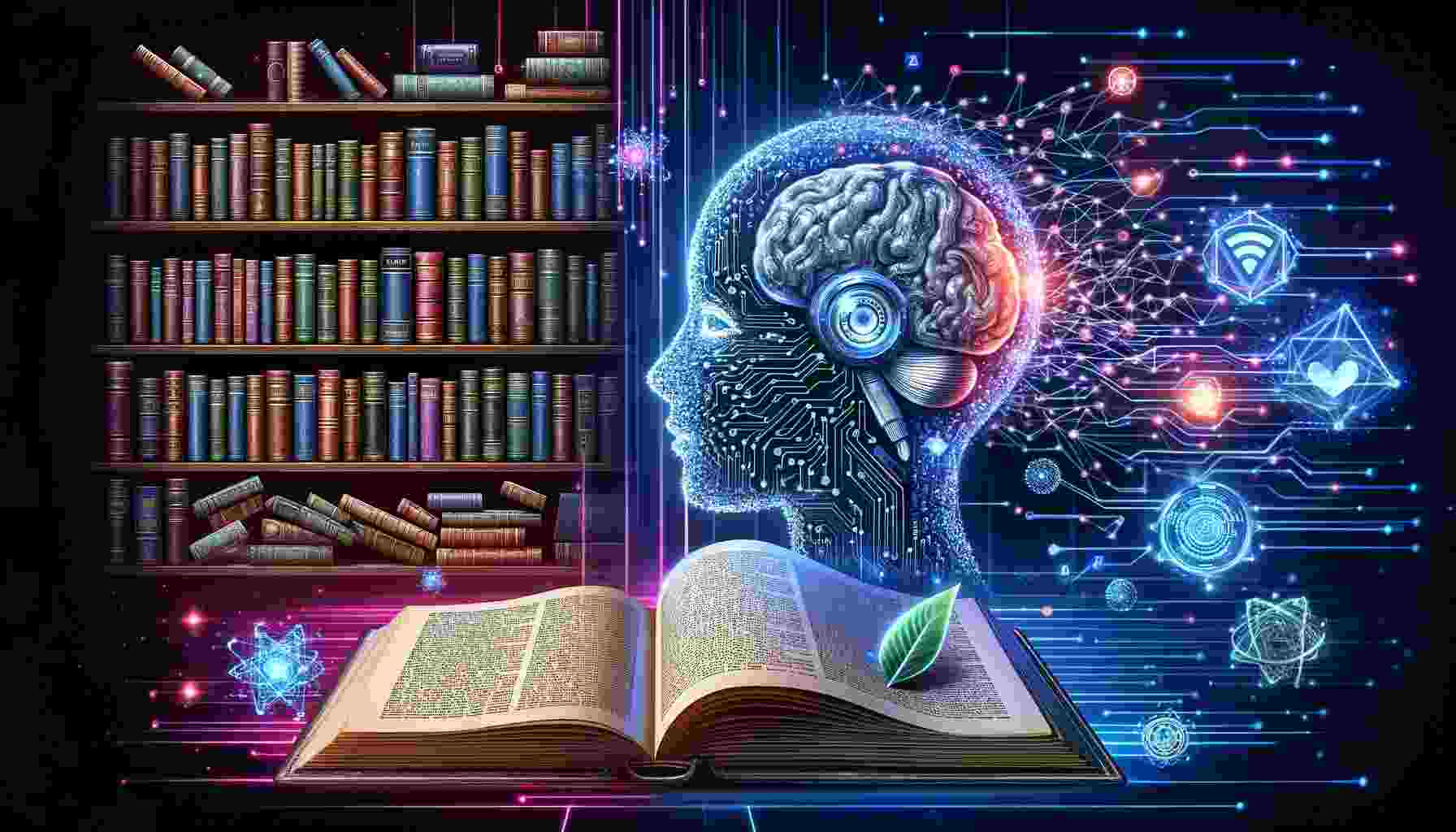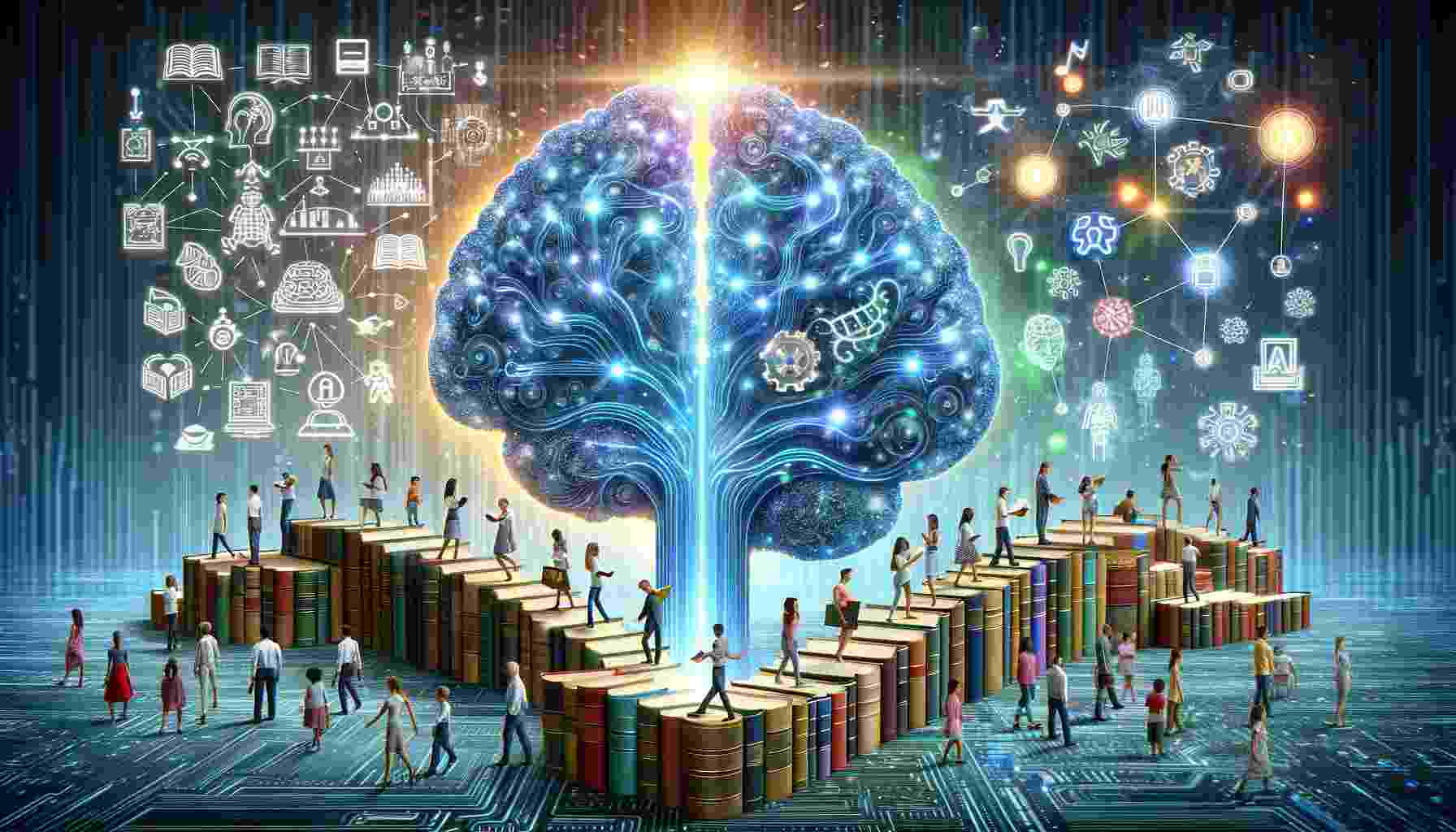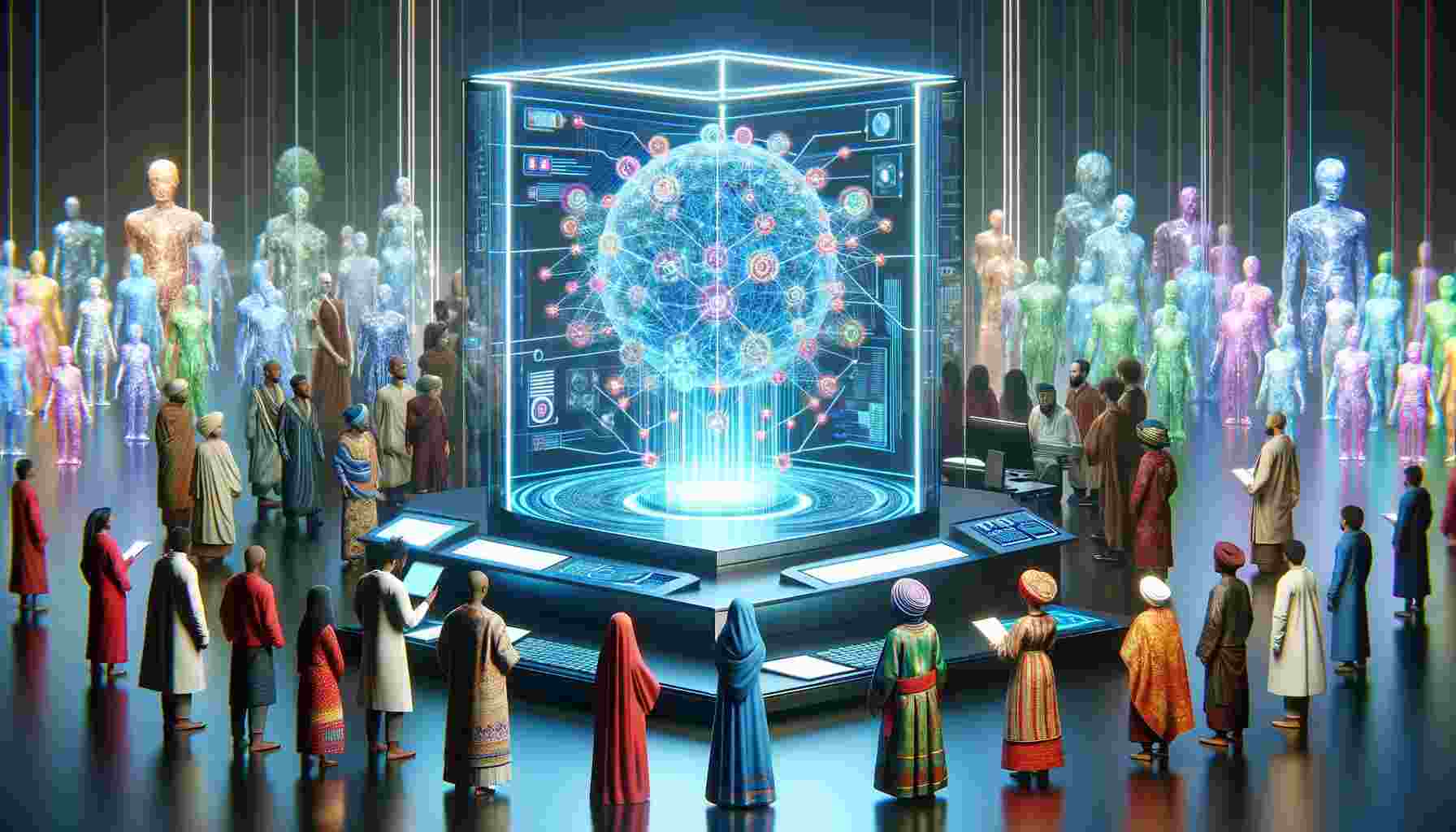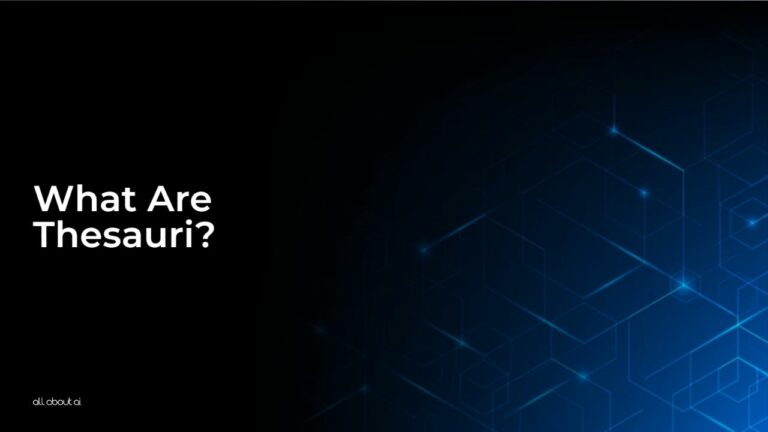In the article titled “What Are Thesauri?”, the concept of thesauri is explored within the context of artificial intelligence (AI). Thesauri are defined as comprehensive collections of words and phrases, systematically organized to aid in advanced language processing. These tools are crucial in enhancing machine understanding of language nuances and contextual meanings.
For further understanding of thesauri, keep reading this article written by the AI Analysts at All About AI.
What Are Thesauri? : Not Your Average Word Collection!
Imagine you have a big, magical book called a “thesaurus.” This book is filled with lots of words and their friends – words that sound the same or mean similar things. Now, think about smart robots that can talk and understand human language. These robots use the thesaurus to learn all these words and their friends. This helps them talk and understand better, just like how you learn new words at school.
What Are Thesauri? The Role of Thesauri in AI
Thesauri play a pivotal role in AI systems by enriching natural language processing (NLP) capabilities. They provide AI with a structured vocabulary, facilitating better interpretation and response to human language.
Examples of AI applications utilizing thesauri include chatbots and virtual assistants, which help in accurately interpreting user queries and providing relevant responses.

- Voice-activated assistants: Utilize thesauri to comprehend diverse speech patterns.
- Sentiment analysis in social media: Employ thesauri to discern nuanced emotions and meanings in user-generated content.
Creating Thesauri for AI Systems
The development of a thesaurus for AI involves meticulous data collection and data categorization. This process is crucial to ensure that the thesaurus covers a wide range of terms and their relationships.
Accuracy and comprehensiveness are paramount in this creation process, as they directly impact the AI system’s efficiency in understanding and processing language.
Creating thesauri for AI systems is a detailed and methodical process, essential for enhancing the AI’s linguistic capabilities. Here’s a deeper look at the steps involved:
- Data Collection: This initial stage involves gathering a vast array of words and phrases. Sources can range from existing dictionaries and literature to real-world language usage data, ensuring a diverse and extensive collection.
- Categorization: After collection, words and phrases are categorized based on their meanings, usage, and relationships with other terms. This might include grouping synonyms, antonyms, and related concepts, forming a network that mirrors human linguistic understanding.
- Contextual Mapping: Beyond basic categorization, the thesaurus must account for context. Words often have different meanings in various contexts, and this complexity needs to be mapped in the thesaurus.
- Continuous Updating: Language is dynamic, constantly evolving with new terms and usages. Regular updates to the thesaurus are crucial to keep it relevant and effective.
- Integration with AI Algorithms: The thesaurus must be structured in a way that is compatible with AI algorithms, allowing seamless integration into various AI systems, from chatbots to predictive text tools.
- Testing and Refinement: The thesaurus is rigorously tested within AI systems to ensure accuracy. Feedback loops help in refining and adjusting the thesaurus based on real-world performance.
- Multilingual Support: For AI systems operating in multiple AI language models, thesauri need to be developed for each language, respecting their unique linguistic structures and idioms.
Benefits of Thesauri in AI
The incorporation of thesauri in AI systems brings forth a multitude of benefits, significantly enhancing their capabilities in understanding and processing human language.
These benefits are pivotal in making AI interactions more intuitive and effective. Key advantages include:

- Enhanced Language Understanding: Thesauri provide AI systems with a broader range of vocabulary, aiding in better comprehension of different linguistic styles.
- Improved Context Awareness: They enable AI to grasp the context in which words are used, leading to more accurate responses.
- Facilitation of Multilingual Support: Thesauri helps AI systems in effectively handling multiple languages, making them more versatile.
Challenges and Limitations
Integrating thesauri into AI systems, while beneficial, also presents several challenges and limitations. These hurdles are critical to recognize and address to ensure the effectiveness and reliability of AI technologies.
Here are some of the key challenges and limitations faced:
- Complexity in Integration: Merging thesauri with diverse AI algorithms can be complex, requiring significant customization and adaptation.
- Keeping Up with Language Evolution: Language is ever-changing, and keeping the thesauri updated with new terms and usages is a continuous challenge.
- Contextual Ambiguities: Despite advanced categorization, thesauri can struggle with words having multiple meanings based on context, leading to potential misunderstandings.
- Cultural and Linguistic Diversity: Creating thesauri that accurately reflect the nuances of different cultures and languages is a daunting task, often leading to gaps in understanding.
- Resource Intensiveness: The development and maintenance of comprehensive thesauri require significant resources, both in terms of time and computational power.
- Limitations in Nuance and Idiom Understanding: Thesauri may not always capture the subtle nuances and idiomatic expressions of language, which can limit the AI’s ability to fully understand and respond in a human-like manner.
- Scalability Challenges: As AI applications grow, scaling thesauri to meet the expanding needs while maintaining accuracy and efficiency becomes a complex task.
Future of Thesauri in AI
Future developments in thesauri for AI could include more sophisticated semantic network and the integration of regional dialects and slang.
This evolution could significantly impact AI advancements, leading to more intuitive and human-like AI interactions.

- Advanced Semantic Understanding: Future thesauri will delve into complex language semantics, enabling AI to interpret nuances, metaphors, and emotional tones more effectively.
- Incorporation of Regional Dialects and Slang: Enhancements will include understanding diverse linguistic variations, and making AI more inclusive and adaptable to global users.
- Adaptive Learning: Thesauri will update in real time with new linguistic data, keeping pace with evolving language trends and expressions.
- Cross-Cultural Language Processing: Enhanced multilingual and multicultural capabilities will improve AI’s proficiency in cross-cultural communication.
- Enhanced Personalization: AI systems will offer more personalized interactions by adapting to individual user language styles and preferences.
- Impact on AI Advancements: These developments will lead to more intuitive, empathetic AI interactions, expanding AI’s applications across various sectors.
Want to Read More? Explore These AI Glossaries!
Embark on a journey into the world of artificial intelligence with our carefully curated glossaries. Whether you’re a beginner or an advanced enthusiast, there’s always something new to explore!
- What is Concept Drift?: In the world of AI, concept drift refers to the phenomenon where the statistical properties of data used to train a machine learning model change over time, leading to a decrease in the model’s performance.
- What is Connectionism?: Connectionism seeks to explain how complex cognitive processes arise from the interactions of these simpler elements, making it a cornerstone concept in modern artificial intelligence (AI).
- What Is a Consistent Heuristic?: it is a heuristic function that never overestimates the cost to reach the goal and satisfies the triangle inequality.
- What Is the Constrained Conditional Model?: it is an advanced predictive model that applies constraints to ensure specific conditions are met.
- What is Constraint Logic Programming?: It is a paradigm in artificial intelligence that seamlessly combines two powerful computational theories: constraint solving and logic programming.
FAQs
What is the difference between a thesaurus and a thesauri?
What is the purpose of Thesauri?
What is the best way to use a Thesauri?
What are 3 uses for a Thesauri?
Conclusion:
This article was written to answer the question, “what are thesauri” in artificial intelligence. Simply put, they are integral for advancing machine understanding of human language. From enhancing NLP capabilities to providing contextual clarity, thesauri offers numerous benefits.
However, they also present challenges, such as staying current with evolving language use. As AI technology progresses, the role and sophistication of thesauri are expected to expand, further bridging the gap between human and machine communication.
To explore more about AI terminologies and their applications, check out our detailed AI Definitions Index.





